Porsche 911 Carrera GTS review: Hybrid power unlocked
The Porsche 911 gets a hybrid powertrain for the first time ever, which marks a new beginning for the world’s most iconic sports car.
Published on Jul 10, 2024 08:02:00 AM
17,947 Views
Follow us on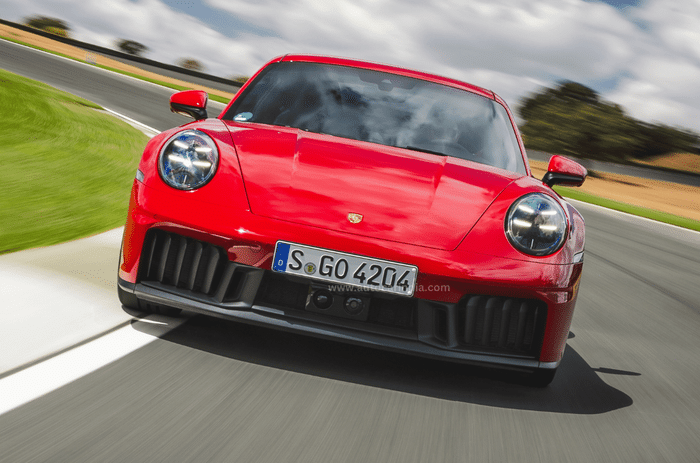

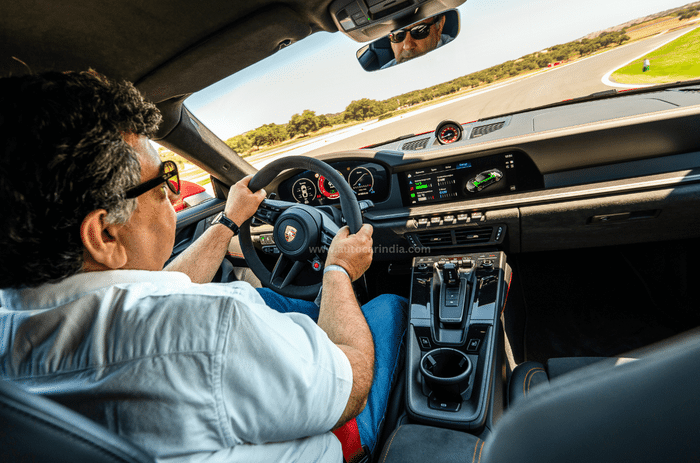
“Change is a constant”, goes the cliche. But in the automotive world, change moves at warp speed – especially in the manic transition to electrification. Yet, there is one car that has resolutely resisted change and stayed true to its essence for over six decades: the Porsche 911. The unwavering commitment to its core identity is the reason enthusiasts adore it, the reason for its phenomenal success, and why it has become, arguably, the most iconic sportscar of all time.
However, the Porsche 911, in its long history, hasn’t escaped the odd radical change. And each one was met with a mix of anticipation and apprehension. The shift from the distinctive air-cooled flat-six – a 911 hallmark – to liquid cooling with the 996 generation raised eyebrows among purists, as did the switch from hydraulic to electric power steering with the 991-gen model. But ultimately, the new tech was embraced, and in fact, it went on to enhance the 911’s appeal.
And now, in its latest 992.2 iteration, the 911 marks what Porsche insiders themselves admit as the biggest transformation ever, with the introduction of a hybrid powertrain. When the news broke that the 911 was going hybrid, there was on outrage on social media that this legendary car would lose its soul. Has Porsche gone too far this time around? Or will the new 911 demonstrate once again that it can adapt and thrive in a rapidly changing automotive world? That’s what we are here to find out at the Ascari circuit in southern Spain.
| Porsche 911 Price, Mileage, Specifications, Features and Variants | |
|---|---|
| Brand | Porsche |
| Model Name | 911 |
| Porsche 911 Price | ₹ 2.44 - 3.27 crore |
| Porsche 911 Range/Mileage | Petrol Hybrid : 9.34kpl | Petrol : 9.62kpl |
| Porsche 911 Specifications | Coupe/Convertible | 2 doors | 2 seats View All Specs |
| Porsche 911 Features | LED headlight | 10.9-inch Touchscreen display | 6 airbags View All Features |
| Porsche 911 Variants | Carrera | Carrera 4 GTS View All Variants |

The latest 992.2-gen 911 includes the standard Carrera coupe, Carrera GTS, Carrera 4 GTS coupe, Targa 4 GTS and the GTS Cabrio. India will only get two variants, the standard 911 Carrera for Rs 1.99 crore and the Carrera 4 GTS for a super steep Rs 2.75 crore, about the same price as the 992.1 GT3 that’s still on sale. Sadly, the Targa and Cabrio variants won’t be coming to India because of certain homologation issues.
The GTS variant, with its everyday usability, has always been the sweet spot in Porsche’s range. Traditionally, Porsche has always introduced the GTS towards the end of the model lifecycle, but this time, it isn’t saving the best for last. And why not? Because it’s only the GTS that comes with the ground-breaking hybrid powertrain, which has ushered in a new era for Porsche.
Porsche 911 Carrera GTS hybrid motor, engine
The heart of the new 911 GTS T-Hybrid (T for turbo) is an all-new 3.6-litre flat-six boosted with a single electric turbo to produce 485hp. It’s complemented with a compact electric motor mounted at the end of the 8-speed PDK gearbox that produces 56hp. Total power output stands at 541hp and 610Nm of torque. The PDK-mounted electric motor is powered by a compact 1.9kWh battery, which is about the same size as your regular 12V battery, and sits in the front without encroaching on the 911’s all-important boot space. The motor in the electric turbo spools it up instantly, and effectively kills turbo lag.
The 400V electrical system runs all the ancillary stuff like the aircon and electrics, and has eliminated the need for power-sapping belt drives. That’s made the engine more compact and 110mm shorter, which leaves space on top to place some of the electrical hardware like the pulse inverter and DC converter.
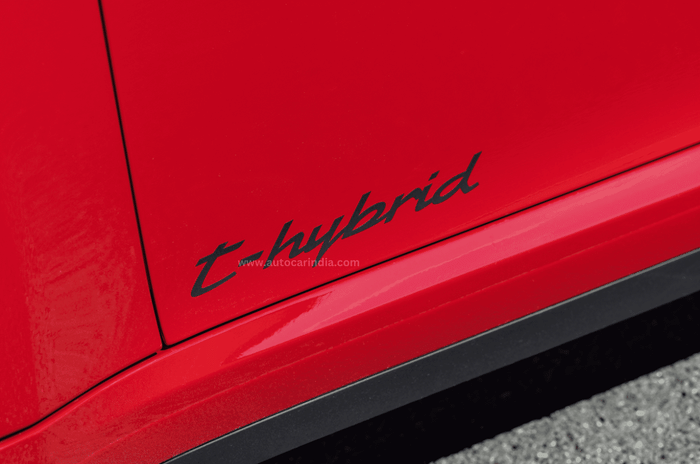
The GTS hybrid system is quite unique – unlike the current crop of supercar plug-in hybrids like the Lamborghini Revuelto or McLaren Artura, there’s no electric-only driving. In fact, there’s no talk of efficiency or lower CO2. The whole idea behind Porsche’s hybrid system is to maxmise performance with minimal weight gain. The new GTS hybrid weighs 1,595kg, just 50kg more than the previous 992.1 911 GTS. In fact, Porsche had a target to keep the weight under 1,600kg, which it has achieved.
Porsche 911 Carrera GTS design, styling
For all the revolutionary tech under the skin, styling changes to the 992.2 are, of course, minimal. After eight generations, the 911 still stays true to the sports car’s original design, and compared to the 992.1, the changes are subtle. The 992.2 gets new bumpers, and new front and rear lights. The nose looks cleaner and uncluttered as everything – including the turn indicators – are integrated into the headlights. The 992.2 comes with massive air intakes in the front and the T-Hybrid gets distinctive looking five vertical slats for each intake, which open and shut like venetian blinds. These movable slats open for more cooling and shut tight in the rain to divert water from the brakes. Like it or not, the vertical slats distinguish the GTS from the standard 911 Carrera, and you really don’t need to opt for the ‘T-Hybrid’ sticker on the door, although it's a no-cost option (for India).
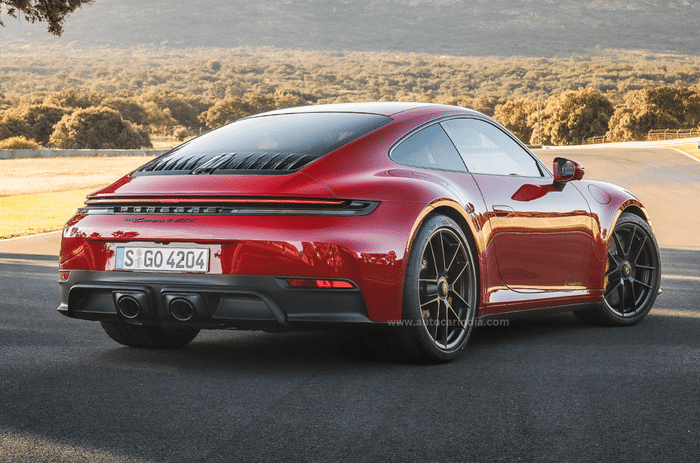
At the back, there’s a big difference between the 911 Carrera and GTS, with the latter having twin exhaust pipes stacked much closer together.
Porsche 911 Carrera GTS interiors, cabin
A change that's possibly more radical than the hybrid tech is the instrument cluster in the 992.2, which, for the first time in a 911, has gone all-digital. The large analogue tachometer that took pride of place in the centre for six decades, is now gone. Loyalists are bound to be dismayed as the tacho was more than just a gauge. It was a symbol of the 911’s racing heritage and mechanical purity. The truth is, hard-core 911 fans are a small tribe, and Porsche has to appeal to a wider, younger and richer audience in the USA and China, who want the latest tech.
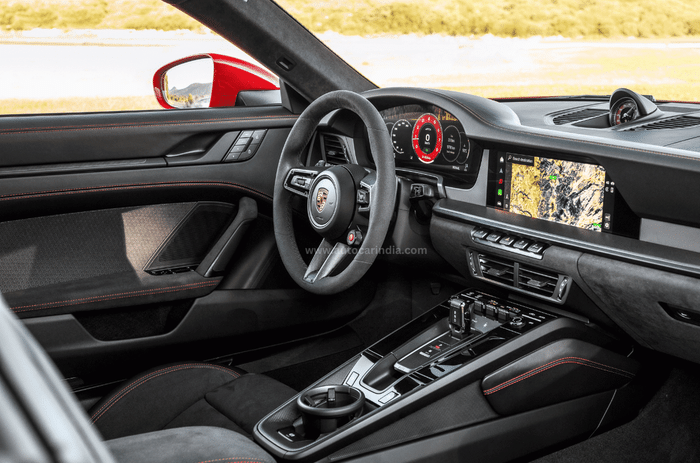
And, to be honest, the digital display gives a lot more flexibility, and can be configured any way you want. You can rotate the rev counter so the redline is at 12 o’clock, switch to the classic five-dial view or replace all the dials with a giant navigation map. The infotainment system is the same unit you get in the Cayenne or Panamera, and geeks will love the screen showing the stats of the hybrid powertrain.
The cabin, otherwise, is the same as before – completely driver-centric and purposeful, and key functions like the drive modes, aircon, audio and damper settings remain physical buttons. But, the stop / start key has been replaced by a button.
Another huge break from tradition is the deletion of the rear seats. The 2+2 seating configuration was a defining characteristic of the 911 and the 992.2 is just a two-seater as standard. But fret not, the kids' seats can be fitted back as a no-cost option, and frankly, I suspect they were removed to achieve Porsche’s sub-1,600kg weight target.
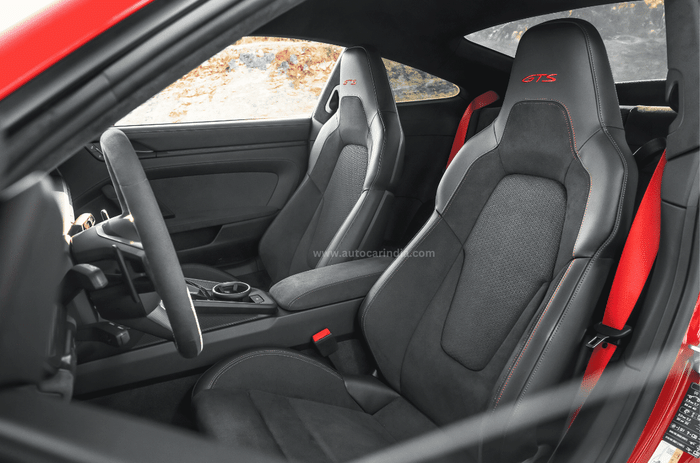
Porsche 911 Carrera GTS ride and handling
The Ascari circuit nestled in the hills of Southern Spain offers a smorgasbord of challenging corners, elevation changes and long straights, making it an ideal location for testing the new 992.2. The circuit's 5.4-kilometre layout has been meticulously designed to replicate some of the most famous corners from racetracks around the world, providing a diverse and exhilarating driving experience.
Exiting the pit lane, there’s a kink and a short straight before the first left-hander, but that’s enough to instantly discover what a different animal the 911 GTS T-Hybrid is. There’s an almost-EV-like thrust off the line, and the response is immediate and slams you into the seat. What’s amazing is that at any throttle position, a tiny flex of your right foot gives an instantaneous reaction. There is absolutely zero turbo lag, and in fact, the T-Hybrid has a sharper throttle response than any naturally aspirated Porsche.
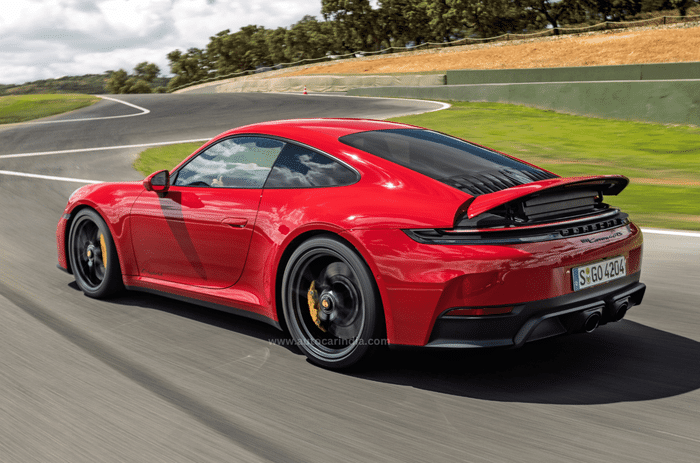
Through the corners, you can precisely meter your throttle inputs, coming on and off the power with surgical precision. Down the straights, the engine pulls in an incredibly linear way. There’s no build up of power as you wind the engine, but just one uniform shove all the way to the 7,500rpm redline. What’s truly astonishing is how the GTS pulls fast and hard from as little as 2,000rpm, with no let up till you hit the rev limiter.
By supercar standards, the GTS isn’t that powerful. 541hp honestly isn’t much, but the GTS feels like a rocket, and much, much faster than Porsche’s claimed 0-100kph time of 3 seconds. It’s beyond 200kph that the GTS could lose ground to more powerful supercars. But on this twisty 5.4km track where the max I could hit was a smidgen below 200 clicks, the GTS is top dog; until the next-gen GT3s expected next year, come along!

The handling, too, is on another level. While all 911 GT cars are known for their sharp handling, the new GTS is like a scalpel, ready to dance on a knife's edge. It’s got a deliciously pointy front end thanks to a faster steering rack with zero slack around the straight-ahead position. The rear-wheel steering makes the GTS so agile that you can just dive into corners and flick from apex to apex like a switch blade.
Grip is absolutely phenomenal, and the characteristic front-end lift under power in a 911 is well-contained thanks to various suspension and kinematic tweaks. Like all 911s, the rear is absolutely rivetted to the ground, more so with the GTS that has fatter 315mm tyres at the back.
And if you were worried that hybridisation would dull the flat-six’s aural drama, you’ll be delighted with the T-Hybrid’s spine-tingling sound. It doesn’t have the throaty roar of a turbo or the wail of a naturally aspirated motor, but it's delightfully loud and high-pitched at high revs, mixed with a bit of electrical whine. It sounds different from any other 911, and much better than the standard 394hp, 3-litre twin-turbo 911 Carrera, which is muted in comparison. The latter is slower, too, by around 9 seconds on the Nurburgring, and on the Ascari track when I drove it briefly, I was struggling to keep up with GTSs in the pack. The standard Carrera’s steel disc brakes felt inadequate, and were no match to the sharp bite and phenomenal stopping power of the standard-fit ceramic brakes on the GTS.
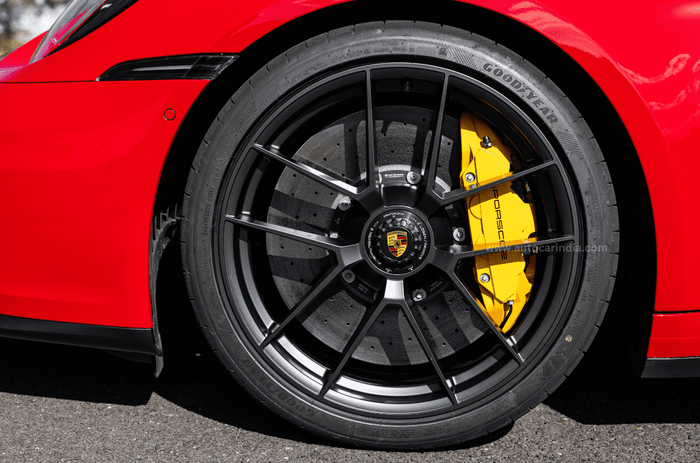
Away from the Ascari circuit and into the surrounding hills, I jump into the 911 GTS Cabrio, which continued to astound. Even the convertible feels like a precision tool, responding instantly to the tiniest of steering inputs whilst blasting through the countryside. Grip is mind blowing, and even more mind numbing is the ride quality. I was amazed at how well the GTS would round of sharp edges without compromising comfort. If there is a fault, it’s that the latest 911, which has grown fatter and wider with every successive generation, felt a touch too big on these narrow and twisty roads.
Porsche 911 Carrera GTS price, verdict
I can confidently say that any fears of the 911 losing its essence with hybrid power are unfounded. On the contrary, the T-Hybrid has not only preserved but elevated the 911's character to deliver that same engaging and visceral driving experience at a whole new level. Porsche has redefined the concept of hybrids, and in the process, redefined the iconic 911, too. 911 purists can heave a sigh of relief, and go ahead and blindly sign that cheque.
Also see:
2024 Porsche 911 GTS video review
Tech Specs 
Copyright (c) Autocar India. All rights reserved.










 Price
Price Engine
Engine Transmission
Transmission Acceleration
Acceleration Body
Body Brakes
Brakes Dimensions
Dimensions
Comments
Member Login
Personal Details
No comments yet. Be the first to comment.